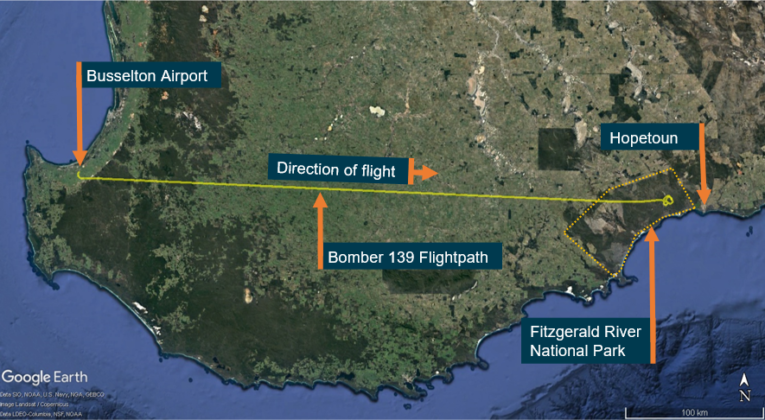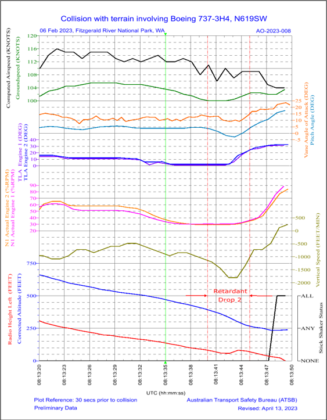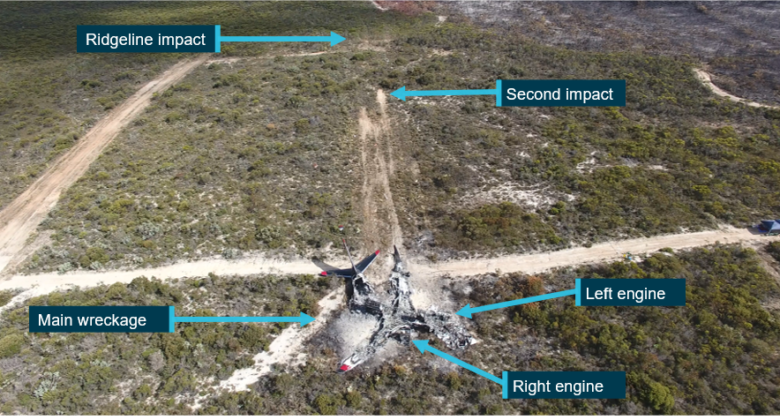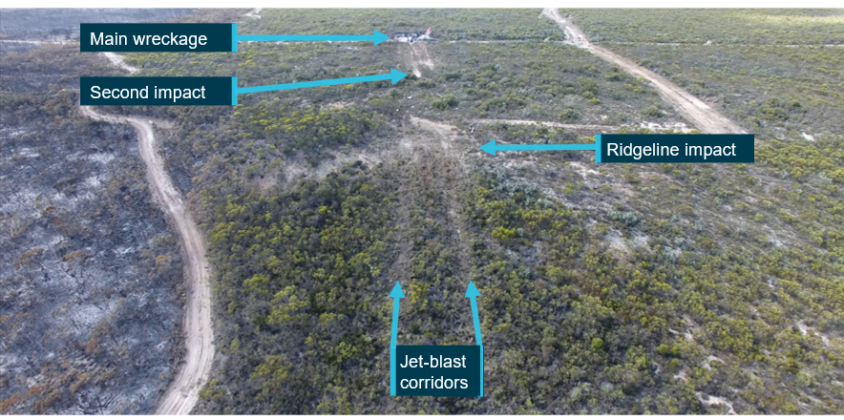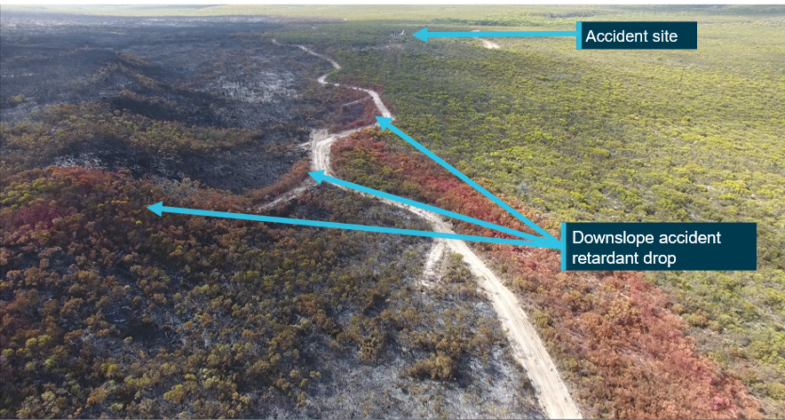A preliminary report by the Australian Transport Safety Bureau (ATSB) has detailed the sequence of events leading to a Boeing 737 large air tanker’s impact with a ridgeline in Western Australia’s Fitzgerald River National Park on 6 February 2023. The Coulson Aviation-operated 737 air tanker, callsign ‘Bomber 139,’ had been deployed for aerial fire-fighting tasks with two pilots on board.
Earlier that day, the Western Australia (WA) Department of Biodiversity, Conservation and Attractions (DBCA) submitted aerial fire suppression requests to the State Operations Air Desk (SOAD) for fixed-wing assets to the location of a fire 24 km west-north-west of Hopetoun, WA. Bomber 139 was tasked for this mission at 1127, 1407, and 1505. The SOAD LAT SARWATCH log recorded Bomber 139 departing from Busselton at 1208 and 1330, returning each time before departing on the accident flight at 1530.
Upon arriving at the fire ground, the 737 crew was briefed by a bird-dog aircraft that the task was to tag and extend an existing retardant line. The target altitude for the retardant line was initially 500 feet, descending to 400 feet above sea level. Flight recorder data showed that Bomber 139 descended to about 400 feet and completed a partial drop of three-quarters of their tank before the captain stopped the drop as their retardant line entered a burnt area.
Bomber 139 repositioned to commence another drop to further extend the retardant line. During the second drop, the aircraft descended through 400 feet altitude (80 feet above ground height) at an airspeed of 110 kt with the engines at high idle. The throttles were advanced and the engines accelerated just before the aircraft struck a ridgeline, activating the stick shaker. The aircraft cleared a small line of foliage before impacting the ground a second time and sliding to rest.
Remarkably, both pilots were able to exit the aircraft through a cockpit window, suffering only minor injuries. The aircraft was consumed in a post-impact fire. ATSB recorders specialists were able to download files from both the flight data recorder and cockpit voice recorder, despite extensive fire damage. The ongoing investigation will utilize information from those recorders, interviews with the flight crews, a 3D map of the accident site created using a drone, and other recorded flight information.
ATSB investigators have also collected documents and recorded data from the operator and records from the WA Department of Fire and Emergency Services. The investigation will include validation of the recorded data and reviews of the communication procedures for bird-dog and large air tanker pilots, the operator’s crew resource management procedures and practices, and standards and safety margins for 737 retardant drops.
Following the accident, the operator increased their large air tanker minimum retardant drop heights and airspeeds. ATSB Chief Commissioner Angus Mitchell said a final report containing findings and the analysis to support those findings will be released at the conclusion of the investigation. However, should a critical safety issue be identified at any time during the course of the investigation, the ATSB will immediately notify relevant parties so appropriate and timely safety action can be taken.
The aircraft involved was a Boeing 737-300, serial number 28035, registration N619SW, issued with a certificate of airworthiness in the transport category on 9 November 1995 and fitted with 2 CFM56-3 turbofan engines. It entered service with Southwest Airlines on 12 November 1995 and accumulated 69,016 hours before transfer of ownership to Coulson Aviation on 8 August 2017. The latest certificate of registration was issued on 14 November 2017 and was valid until 30 November 2023.
On 10 November 2018, Coulson Aviation was issued a supplemental type certificate (ST04050NY) for the installation of the Coulson Aerial Firefighter Tanker Modification to Boeing model 737-300 series aircraft, limiting passengers to persons related to firefighting mission-essential activities. The tanker modification was completed on 30 May 2022. At the time of the accident, the airframe had accumulated 69,187.6 hours.
The incident underscores the risks and challenges faced by aerial firefighting crews during wildfire operations. The ATSB investigation continues to analyze data, review procedures, and identify potential safety improvements to prevent similar accidents from occurring in the future. The final report will provide a comprehensive understanding of the accident’s contributing factors and any necessary recommendations for enhanced safety measures.



